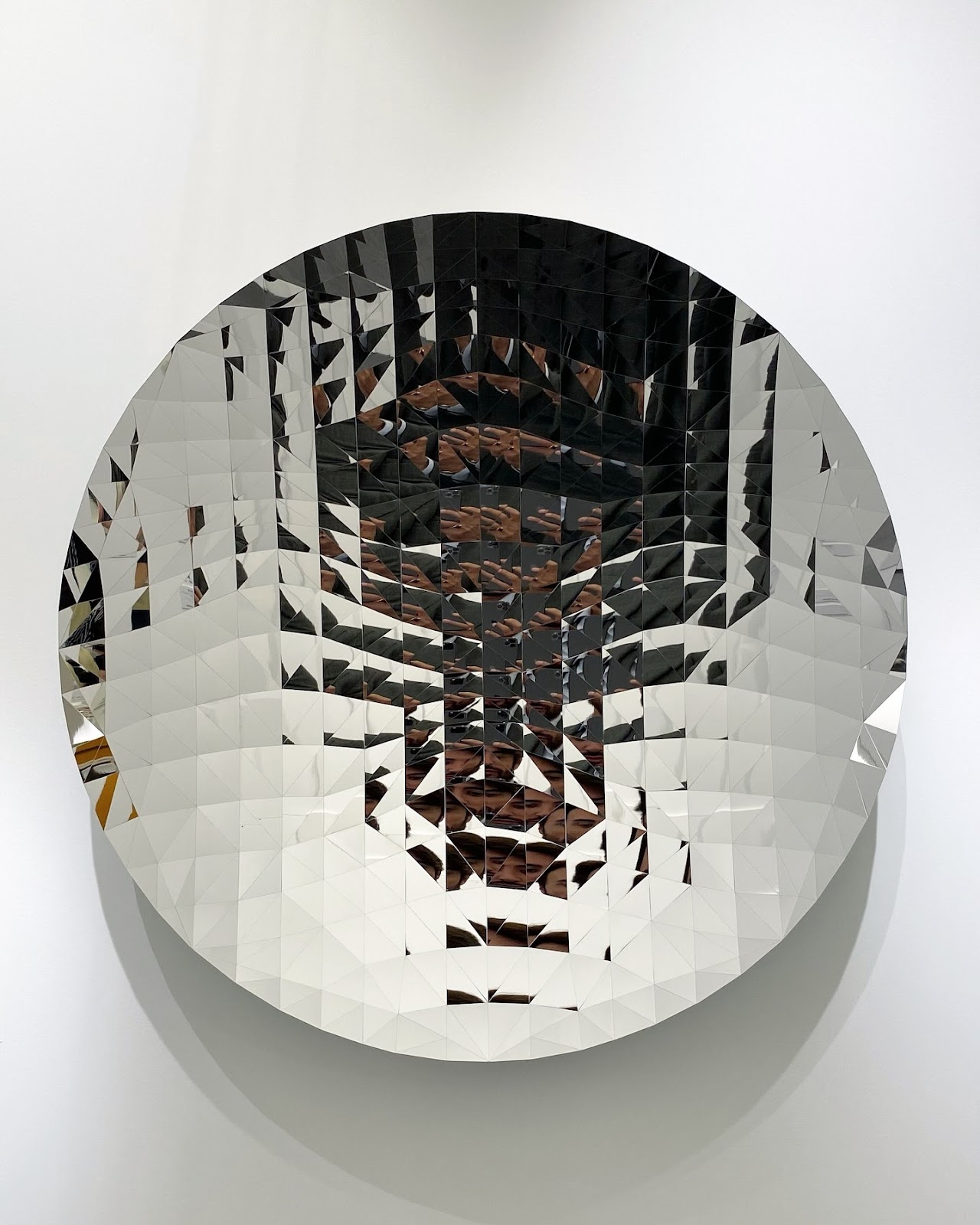The mirror has been a symbolically charged element in art since time immemorial, used to convey ideas, evoke emotions, and tell stories in unique ways.
One of the most famous and widely recognized works is The Arnolfini Portrait (1434) by Jan van Eyck (Maaseik, Belgium, 1390 - Bruges, Belgium, 1441). In this Flemish painting, the convex mirror in the background masterfully reflects the room and the scene in a play of mirrors within mirrors. It reveals a detailed reflection of the couple and has been interpreted as possibly including the image of the artist alongside another figure, thus symbolizing both marital unity and divine omniscience.
2.jpg)
In Woman with a Mirror (c.1515) by Titian (Pieve di Cadore, Italy, c. 1488-1490 - Venice, Italy, 1576), the Venetian artist explores the intimacy of feminine beauty. The mirror does more than duplicate the woman's image, it evokes vanity, self-awareness, and reminds us of the fleeting nature of beauty and youth. This recurring motif in Venetian painting highlights the connection between the spiritual and the physical, inviting the viewer to question the true nature of beauty.
The mirror does more than duplicate the woman's image, it evokes vanity, self-awareness, and reminds us of the fleeting nature of beauty and youth.

Las Meninas (1656) by Diego Velázquez (Seville, Spain, 1599 - Madrid, Spain, 1660) is another iconic work where the mirror plays a crucial role. Positioned in the background, it reflects the absent monarchs, creating an ambiguity between what is real and what is represented. Velázquez manipulates space and perspective so that the mirror acts as a bridge between the viewer, the characters, and the artist, suggesting the coexistence of multiple layers of reality, a resource that has sparked debates about illusion and the role of art in mirroring reality.
Velázquez manipulates space and perspective so that the mirror acts as a bridge between the viewer, the characters, and the artist, suggesting the coexistence of multiple layers of reality.

In the 19th century, Before the Mirror (c.1876) by Édouard Manet (Paris, France, 1832 - Paris, France, 1883) portrays a woman in dialogue with her reflection. Here, the mirror is not merely a duplicator of image but transforms into a space for social critique and exploration of female subjectivity, challenging the traditional masculine view of beauty.
The mirror is not merely a duplicator of image but transforms into a space for social critique and exploration of female subjectivity, challenging the traditional masculine view of beauty.
.jpg)
Pablo Picasso (Málaga, Spain, 1881 - Mougins, France, 1973), in his work Girl before a Mirror (1932), presents a woman observing her reflection in a mirror. He deconstructs and distorts her image in a Cubist manner, fragmenting it to symbolize the complexity and multiplicity of identity. This representation underscores the duality of human nature, the difference between how we see ourselves and how we truly are.

Moving into contemporary art, Yayoi Kusama’s (Matsumoto, Japan, 1929) Infinity Mirrored Room (2013) is an immersive installation filled with endless mirrors that reflect points of light. It creates a universe of lights and reflections where space seems to multiply until it disappears, symbolizing her obsession with the infinite, the loss of boundaries, and the connection of the “self” with the cosmos.
It creates a universe of lights and reflections where space seems to multiply until it disappears, symbolizing her obsession with the infinite, the loss of boundaries, and the connection of the “self” with the cosmos.
.jpg)
Olafur Eliasson’s (Copenhagen, Denmark, 1967) Pentagonal Mirror Tunnel (2017) transforms space into a kaleidoscope of lights and forms. Arranged in a pentagonal pattern, the mirrors invite the viewer to reconsider their perception of space, suggesting an infinite repetition and the fragmentation of time, while serving as a bridge between the physical and the imaginary.

Similarly, Anish Kapoor’s (Bombay, India, 1954) Random Triangle Mirror (2018) uses mirrors to distort both the surroundings and the viewer’s image. This work questions the boundary between sculpture and space, exploring the ambiguity of perception and the dynamic interplay between an object and its reflection.
This work questions the boundary between sculpture and space, exploring the ambiguity of perception and the dynamic interplay between an object and its reflection.

Finally, Carlos García’s (Asturias, Spain, 1978) Untitled (2024) employs mirrors to explore the subjectivity of reality. Through geometric abstraction, each part of the sculpture appears as a fragmented projection that varies with the viewer’s position. The interplay of light and mirror creates an illusionary universe of volumes and ephemeral shadows, evoking the fragility of what is visible and the essence of emptiness, while challenging the notion of an objective reality.
The interplay of light and mirror creates an illusionary universe of volumes and ephemeral shadows, evoking the fragility of what is visible and the essence of emptiness, while challenging the notion of an objective reality.
%20(1).jpg)
In conclusion, each of these works offers a unique window into how artists have employed the mirror to delve into themes such as identity, duality, illusion, and reflection. The mirror stands as a powerful artistic tool, inviting us to question and deepen our perception of the world and ourselves.